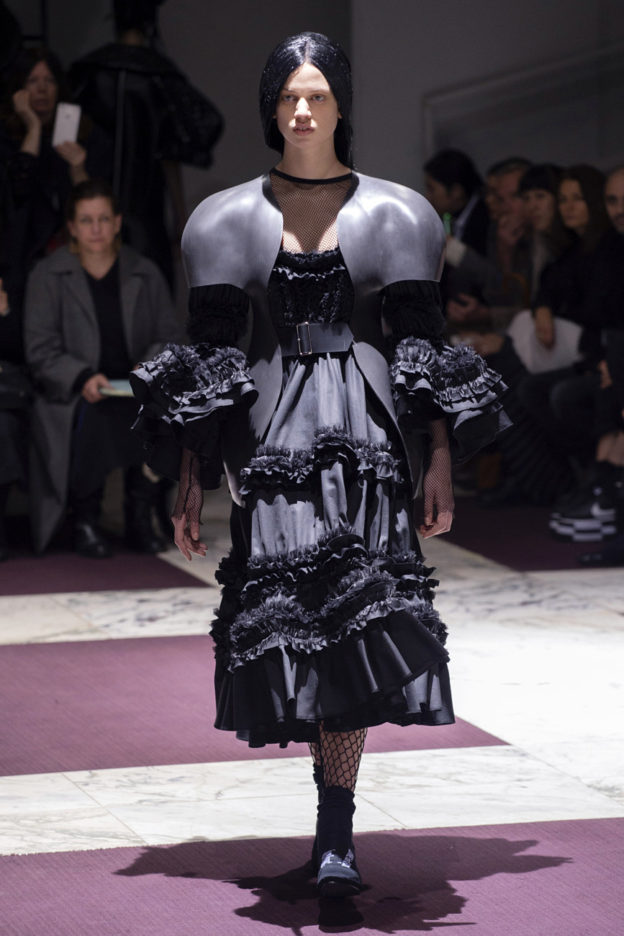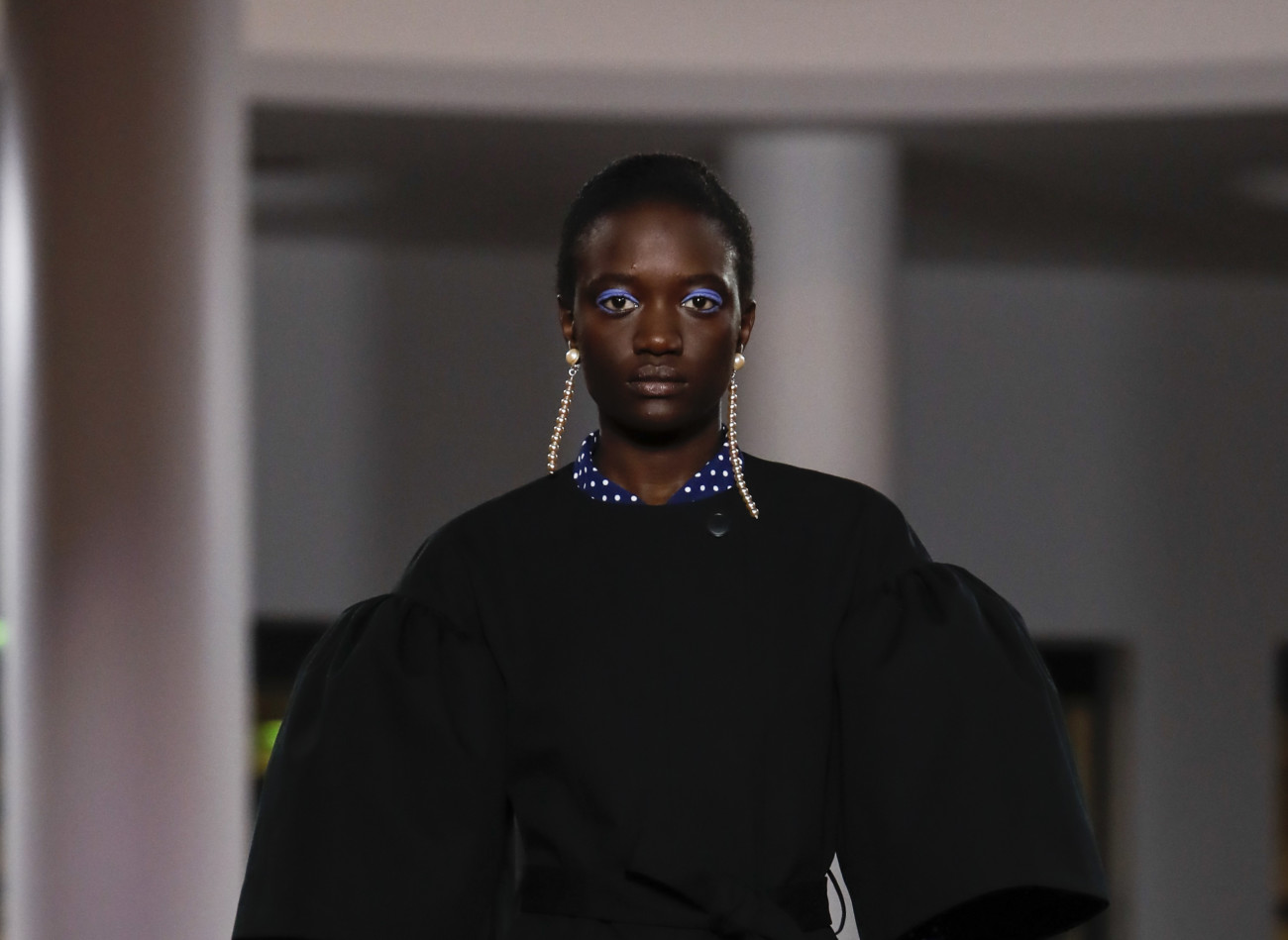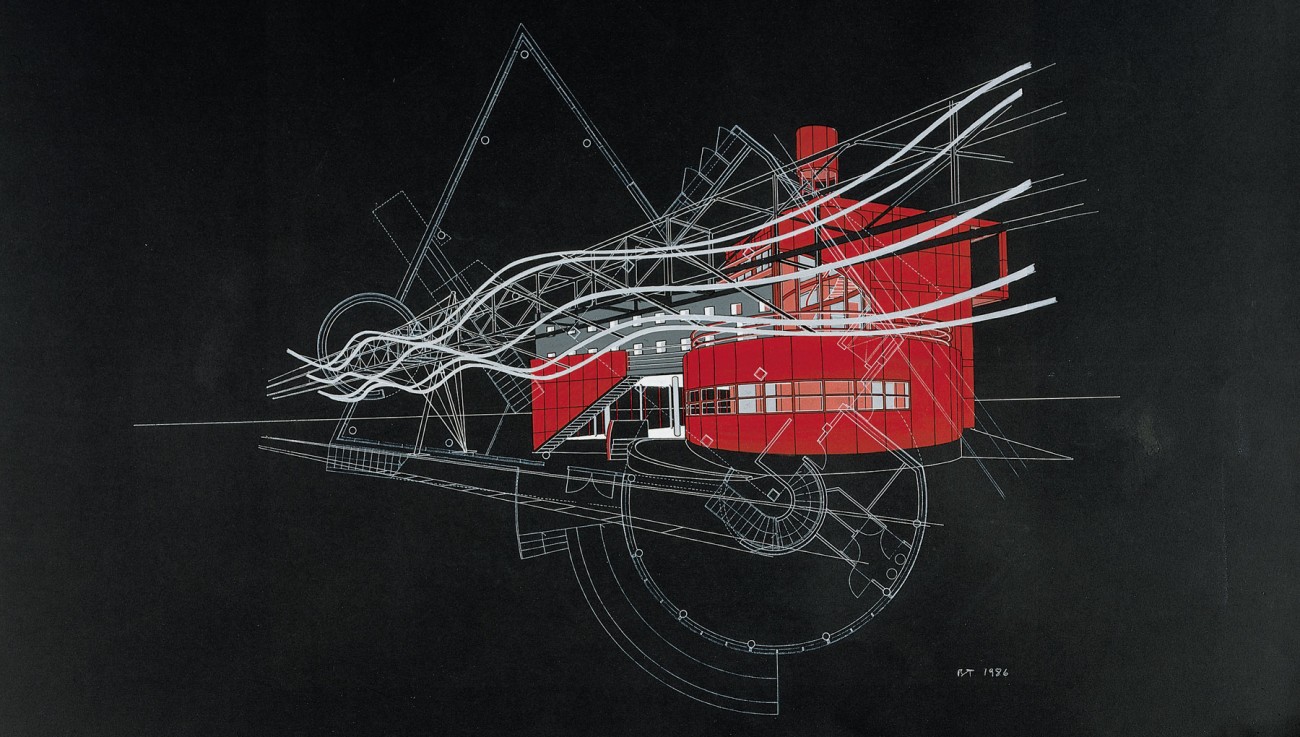
One could question the location Rei Kawakubo chose this season to present her Comme des Garçons Fall/Winter 2019/2020 collection. She picked the hall of a neoclassical building on rue Cambon—though not the famous number 29! As always, Kawakubo intervenes with the space. Here she created a stage from the marble flooring, overlaid with strips of red-passé carpet. This small arena is enclosed by a few rows of benches and six long, lighted perches—the same machines that will later follow each model in an idiosyncratic ballet, giving the set a futuristic twist. As usual, the assembly is small, but one should know Kawakubo is not here to convince a large audience, but rather one that focuses.

Silence. The show is about to start. The lights turn off, the room is dark, and the ambiance feels quite enigmatic. Rei Kawakubo holds her crowd in a meditative state for one minute of silence. Strangely, this minute feels like eternity—long enough to understand the roles that gravity and magnitude play in this collection. Finally the show starts, with a discontinuous soundtrack from the back. One by one each model comes out to follow the patch of a square—making sure to pass by every corner—and meet at the center. Yet we feel a sense of disorder on stage, and in the air.


The ambiance is austere: each silhouette is uniquely worked with fastidious details and crafted in a range of solid black materials that echo throughout the space like shadows of knights stepping out of the nightfall. This season, Kawakubo envelops her women in a voluminous armor, dark and rigid. The collection recalls medieval and ecclesiastical themes reinterpreted in a raw couture spirit. One purple garment questions signs of royalty. As always, Kawakubo dazzles with radical strength and bold engagement.


































